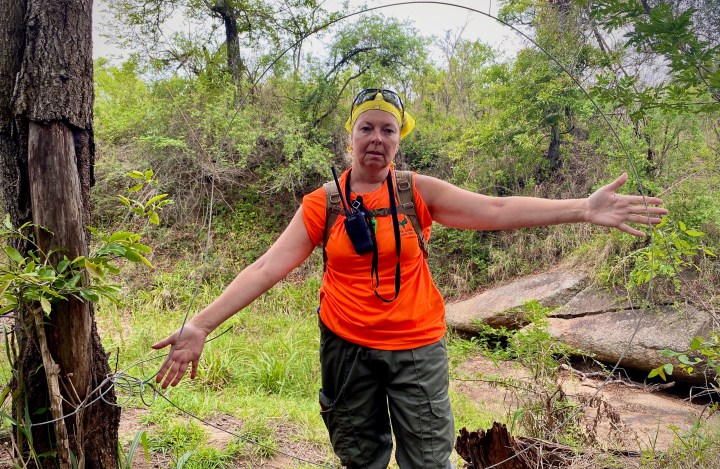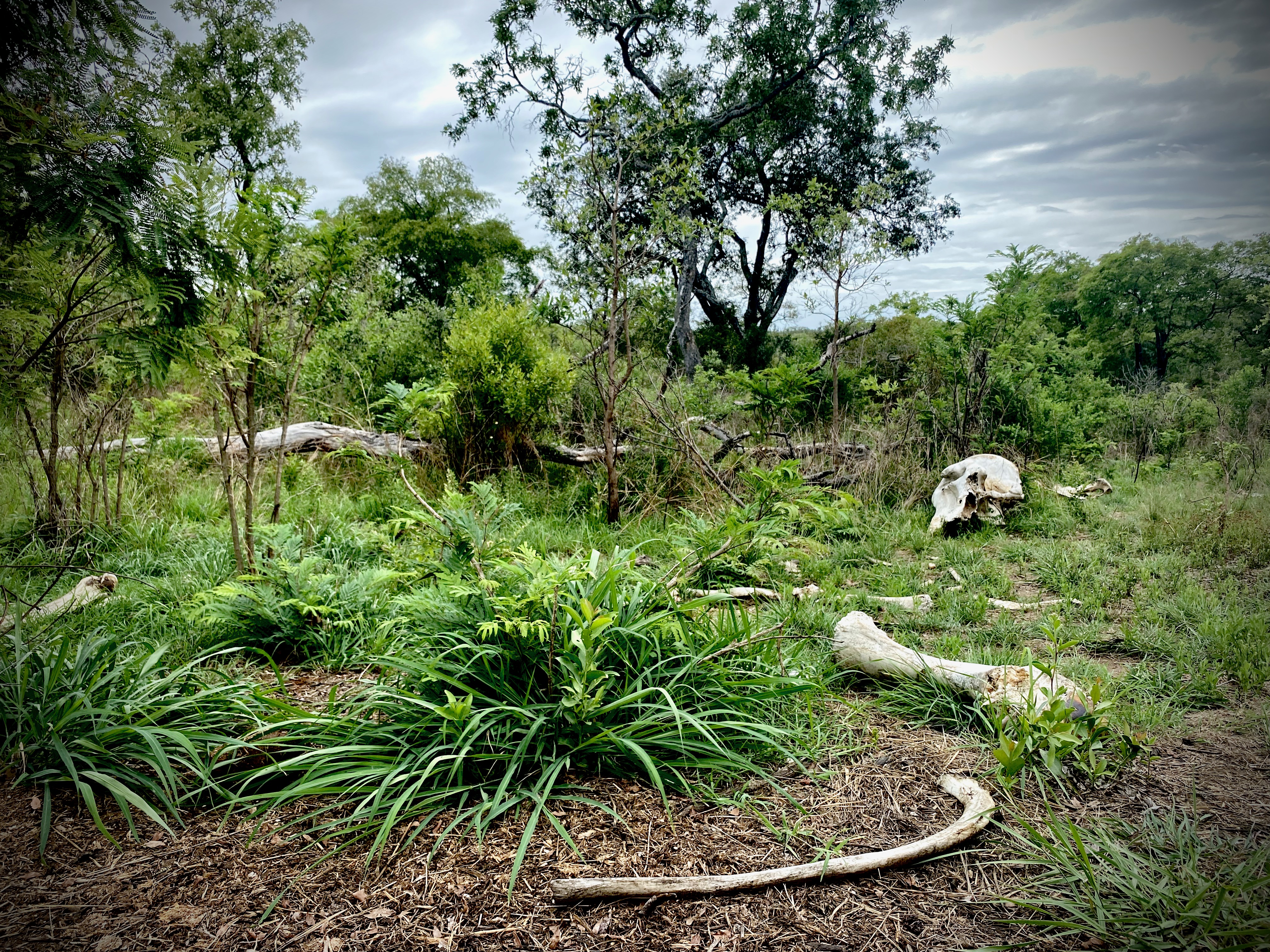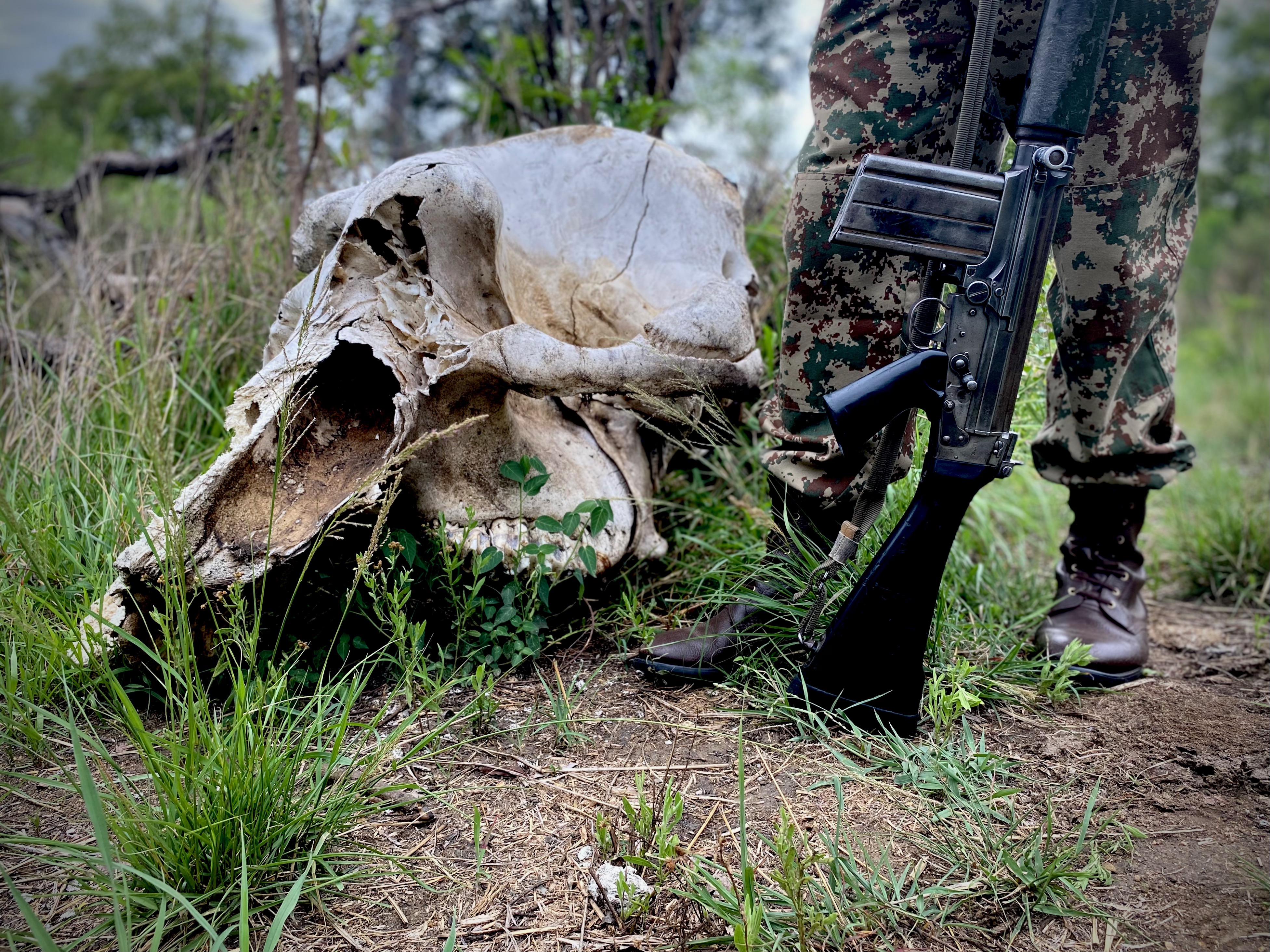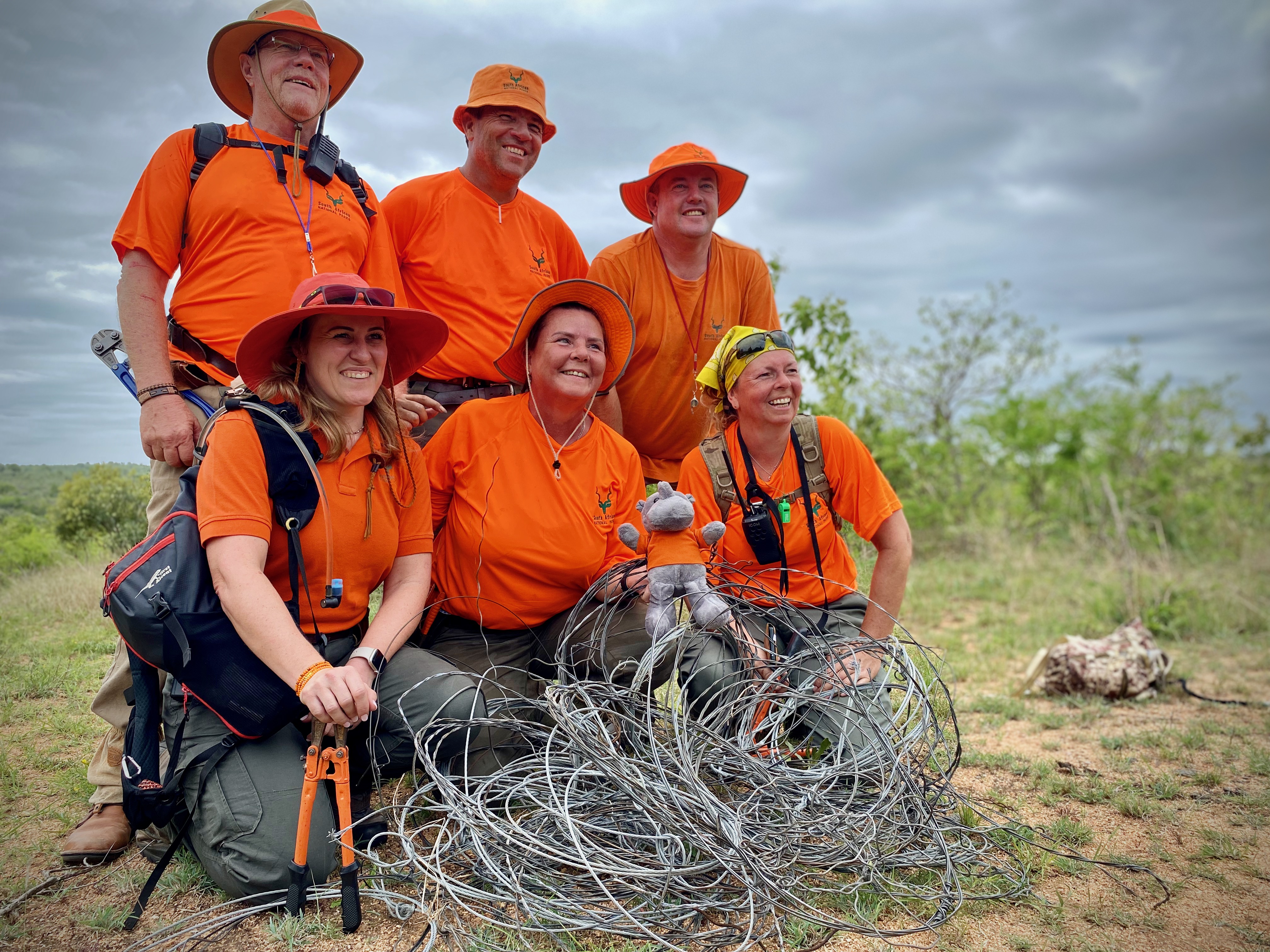WILDLIFE WOES
Hit on Kruger Park buffaloes – at least 135 bovids dead out of 415 animals snared across species in 2023

They’re often called Africa’s most dangerous animal to hunt, but snares in Kruger National Park seem to be making a mockery of the buffalo’s feared stature. Another animal known for its size and strength, every elephant poached in the park this year died in an agonising snare. Now the Democratic Alliance says it wants answers from Parliament on how snaring has affected all national parks.
South African National Parks (SANParks) faces mounting pressure to address a snaring surge and disclose how many of these killer traps have been removed within its reserves since the onset of the pandemic. This distressing situation, initially reported by Daily Maverick and brought to light through Parliamentary questions, has prompted calls for transparency and action to safeguard the nation’s rich biodiversity.
Responding to questions at the weekend, SANParks told Daily Maverick that 135 buffaloes had been “lost due to snaring” between January and October this year, making up nearly 35% of 415 cases for all reported species.
As we revealed recently, an income void left by a decline in rhino poaching may now be driving impoverished communities next to the park to snare and shoot buffaloes in the southwest sector.
“Remember most of the people here, they were relying on rhino poaching for survival,” explained Pretoriuskop section ranger Rangani Tsanwani, who had been working in the park for about 20 years. To down quarry as large as buffalo, some poachers were resorting to more than enormous snares.
“Now they don’t have anything that is bringing food to the table — so they are moving to buffaloes, shooting the buffaloes and selling the meat,” he said.
Among known snare casualties, antelope usually targeted for bushmeat also stood out, SANParks told us — including impala (115 known deaths); zebra (48); kudu (25); and nyala (23).
In a meeting of Parliament’s environmental portfolio committee last week, SANParks CEO Hapiloe Sello also reported the loss of six Kruger elephants — 100% of these animals were killed by snares.
Watch: A Kruger field ranger, whose face and voice we could not reveal, identifies the site of a possible elephant shooting in Pretoriuskop, a snaring hotspot. The age of the site was unclear.
There are about 30,000 elephants and 20,000 buffaloes in the 2 million-hectare park according to official census figures, and these known snare victims may seem small compared with the overall populations.
Yet, without agreed and tested solutions, no one can say if or when the current surge will peter out, and this is where the cautionary spectre of 2007’s 13 poached rhinos remains ever present. That seemingly minor number sky-rocketed by 10,000% in 2014 — ultimately haemorrhaging 10,000 animals, and resulting in a population that is probably a lot less than 3,000 today.
And then there is the obvious fact that reported snare figures can only account for found carcasses. So, capturing a true picture of how many buffaloes and other species are claimed by the snarer’s noose is a hard problem.
The park removed 14,000 snares between 2020 and 2022, mainly in southern and northern hotspots like Pafuri, Pretoriuskop, Skukuza and Stolsnek. While this is a significant effort, it does not explain the 200% increase in found snares over this period, which marks a threefold increase that far outpaces documented deaths.
According to SANParks, their stats reveal that the much smaller Mapungubwe in Limpopo province is the next most affected park. Here, impala topped the list at six individuals and 18 snare victims of various species were claimed in the months to October.
In response to the surge, Democratic Alliance committee member Hannah Winkler said she would initiate more Parliamentary questions. These inquiries would seek insights into the extent of the challenge across all SANParks reserves; how animal numbers were being affected; and how effective anti-poaching initiatives were.
Winkler said she would also probe underlying causes behind the surge, including potential connections to heightened bushmeat demand.
A disturbing trend in Kruger National Park
During Daily Maverick’s field visit to Pretoriuskop in late October, a field ranger not authorised to speak pointed us to a chaotic scattering of elephant bones in the snaring hotspot.
We had accompanied Kruger staff and honorary rangers to witness the removal of 66 snares in a single morning between 7am and 10am. Pointing out the absence of a large tree to support a jumbo-sized snare, where nothing but the beast’s gigantic bones now lay, the ranger said it had been shot.
“They come inside just to shoot it, then they get the meat,” we were told.

A scattering of elephant bones at a possible shooting and slaughtering site in Pretoriuskop, Kruger National Park. The immediate area was open and did not feature obviously large trees to hold an elephant snare. (Photo: Tiara Walters)
Although death by natural causes could not be ruled out, the ranger suggested the bones were strewn by both animals and humans after the elephant had been slaughtered, and its meat carried out. Scavengers would have finished off the job, leaving not a shred of discernible meat at the kill site.
This, then, looked like a tragic example of death by gun in a snare hotspot — suggesting that the booby-trapped area at large also provided fertile territory for other types of poaching to flourish.
“They just chopped the meat only, then they leave the bones … The animals, they came after that,” he said.

During a hunt for snares in Kruger’s Pretoriuskop section in late October, Kruger staff identified a probable shooting and slaughtering site containing this elephant skull. (Photo: Tiara Walters)
According to Tsanwani, the Pretoriuskop section ranger, snarers also ignited fires to attract animals to new growth vegetation.
Youths were hired to monitor and report animal movements within the park, with buyers lined up on the outside — indicating that snaring had morphed into a commercial enterprise.
Aside from stoking criminality, there was the sheer if perhaps unintended cruelty unleashed by snaring. While it may not be a subsistence snarer’s intention to inflict prolonged pain, a cable set for a buffalo could shear off an elephant trunk instead. Indeed, park spokesperson Ike Phaahla told Daily Maverick that the six snared elephants may have lost their lives entirely by accident, “as snares are indiscriminate”.
A cable snare, which cuts like a knife, can persistently slice into its victim over time as the animal tries to break free, or treks across vast distances, eventually dying of infection. Staff have reported finding fence-area casualties deep within the park, although most snares lie in wait within a few kilometres of the western perimeter.
Possible solutions: supplying communities with park meat
SANParks would be consulting with traditional leaders and communities, Sello, the CEO, also noted. Meat might be supplied to impoverished communities living next to the western fence.
With this, she said the parks organisation would “perhaps enlarge our activities with regards to sustainable use of animals with the communities in terms of them being beneficiaries of some of our culling activities”.
Sello was describing activities reported in Parliamentary figures released on Friday afternoon. For 2022, for instance, the data cited offtakes of 16 “damage-causing” elephants, “including causing damage in the Skukuza airport’s runway and precinct”.
Elephant meat was donated to communities “on the basis of need” while meat from 59 buffaloes were sold to park staff and residents “at an average price of R66.76 per kilogram”. Total meat sales revenue was R770,000, and the money was reportedly fed back into the costs of animal off-takes and meat processing.
Sello stressed, however, that interventions were in an “early days” stage. No decisions had been made.
“These are engagements I had with my colleagues just last week to say we have to rein this situation in,” she said. “But to do so we need to understand the reasons and what is driving it.”
And there’s the rub, because snaring is covert and difficult to track. In October, Creecy reported that SANParks had yet to conduct “specific research to understand the primary drivers”, yet “we notice the increase coincides with the Covid-19 pandemic and increased poverty among communities adjacent to the Kruger Park”.
“Snaring is an issue of major concern in Kruger,” Sello said. “We have noted the uptick. There are speculations that there is an increase in bushmeat demand and perhaps community members are using this opportunity to create income for themselves.”
Sello also cited the “possibility of bushmeat trade — what we call poaching for the pot”.
While the park had not confirmed that animal parts were widely used for traditional medicine (muti), some individuals found with body parts had been identified as traditional healers, according to Phaahla, the park’s spokesperson.
Animal populations are growing, despite the surge
It sounds like an apocalypse, but Kruger’s large mammal ecologist Dr Sam Ferreira says it is not.
Over the past 15 years, spotted hyenas had doubled to about 7,000, revealing a good prey biomass. Lions were stable at 2,000 — despite poisonings.
Hippos had shown their own brand of resilience, reaching highs of 7,000 before a drought in 2015-2016.
Black rhinos “managed to maintain their low populations” at 210, but white rhinos faced higher mortality rates.
“Kruger is surrounded by poverty-stricken communities where there is no service delivery, unemployment is very high and there is little or no law enforcement,” said Phaahla, who cited “key” partnerships with law-enforcement agencies and communities in the hope of addressing the surge.

A group of SANParks honorary rangers display the 66 snares they hunted down and dismantled, together with Kruger field rangers, on 25 October. (Photo: Tiara Walters)
The task is unenviable — regularly responding to snare call-outs in an Israel-sized park whose 6,000km of roads represent just 4% of this wilderness.
To be sure, while there is nothing new about snaring, this surge is new, and it exposes the biggest threat multiplier — a culture of lawlessness, fomented by hunger, poverty and desperation, growing around South Africa’s national parks.
The question is how urgently Kruger, policymakers and partners can pivot from the trauma of rhino poaching for the next leg of the relay.
“SANParks has been investigating safe means of distributing meat to communities to counter the illegal bushmeat trade, there are several suggestions which have been submitted and those are being considered. It is a process that needs due diligence and patience to make it a success,” Phaahla said. “Sustainable resource policies are in existence and once a safe method has been finalised, the supply to adjacent communities will commence through the forums that are in existence.” DM
Report snaring incidents in Kruger National Park, including the exact time, location and description of the sighting, to the Majoc Emergency Call Centre at 076 801 9679.
Tiara Walters is a full-time reporter for Daily Maverick’s Our Burning Planet unit. Walters’s recent stay in Kruger National Park was made possible, in part, by South African National Parks.
For behind-the-scenes reports, follow Tiara Walters on Instagram at tiara.adele.walters




















 Become an Insider
Become an Insider
It’s easy to blame the local communities, and the poachers certainly should be held responsible. But let’s see the bigger picture: without the near-total failure of government at all levels, these communities would not be destitute and desperate. Lack of service delivery, wholesale looting of funds, steep taxes on fuel that raise the price of everything else, and failure to provide the conditions suitable for job creation by the private sector have driven these communities to such tactics, and it is the ANC government who are ultimately to blame.
If you’re going to play this game, then why stop at the ANC? May as well blame apartheid, or colonialism, or Jan van Riebeek.
South Africa is lost. There is no real interest in doing anything about all their problems.
With a government that is totally corrupt from the top to the bottom and Ramaphosa leading the way.
Good bye SA 🙏
I dont understand – surely the fences of the Kruger Park should be checked reguraly . And to be electrified?
Corruption will always thrive in africa. Greed by all. When the anc took over, companies were queuing to pay backhands for business defined a culture. Paying people to breed when there are no work and less food? Bye bye SA
Bye bye South Africa R.I.P